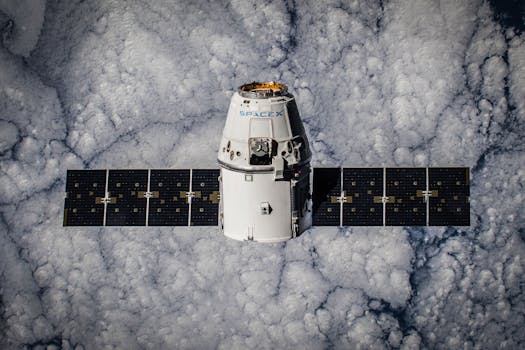MEO Satellites: Revolutionizing Global Communication with Medium Earth Orbit Technology – MEO satellites

MEO Satellites: Introduction to Medium Earth Orbit Technology – MEO satellites
MEO satellites, or Medium Earth Orbit satellites, operate at an altitude of approximately 2,000 to 36,000 kilometers above the Earth’s surface. This unique positioning allows MEO satellites to offer a range of benefits, including reduced latency, increased coverage, and improved flexibility. In this article, we will delve into the world of MEO satellites, exploring their history, technology, applications, and future prospects.
MEO satellites have been in use for several decades, with the first MEO satellite launched in the 1970s. However, it wasn’t until the 1990s that MEO satellites began to gain popularity, particularly with the launch of the first Global Positioning System (GPS) satellites. Today, MEO satellites are used for a wide range of applications, including navigation, communication, weather forecasting, and Earth observation.
How MEO Satellites Work
MEO satellites use a network of satellites in medium Earth orbit to provide global coverage. Each satellite is equipped with a range of instruments, including transponders, antennas, and solar panels. The satellites communicate with Earth stations and other satellites using radio waves, allowing for the transmission of data, voice, and video signals.
One of the key advantages of MEO satellites is their ability to provide low-latency communication services. Because MEO satellites are closer to the Earth’s surface than geostationary satellites, they can offer round-trip latency of less than 50 milliseconds. This makes MEO satellites ideal for applications that require real-time communication, such as video conferencing, online gaming, and financial transactions.
Applications of MEO Satellites
MEO satellites have a wide range of applications, including navigation, communication, weather forecasting, and Earth observation. In the field of navigation, MEO satellites are used to provide location information and timing signals, which are essential for a range of applications, including aviation, maritime, and land transportation.
In the field of communication, MEO satellites are used to provide broadband internet services, including voice, data, and video transmission. MEO satellites are particularly useful in areas where terrestrial communication infrastructure is limited or non-existent, such as in remote or rural areas.
Future Prospects of MEO Satellites
The future of MEO satellites looks promising, with a range of new applications and technologies on the horizon. One of the most significant developments is the launch of new constellations of MEO satellites, which will provide global coverage and unprecedented levels of connectivity.
Another area of development is the use of MEO satellites for 5G and 6G communication services. MEO satellites are ideal for providing high-speed, low-latency communication services, which are essential for a range of applications, including IoT, autonomous vehicles, and smart cities.
In conclusion, MEO satellites are revolutionizing the way we communicate globally, offering unparalleled advantages in terms of latency, coverage, and flexibility. As technology continues to evolve, we can expect to see even more innovative applications of MEO satellites in the future.